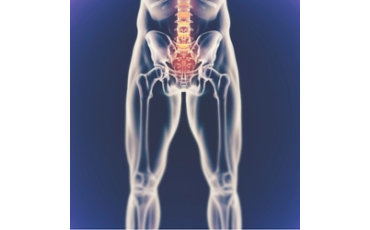Headache, neck pain and symptoms of thoracic outlet syndrome are common complaints in patients with poor trunk function. When the upper thorax and shoulder girdle become restricted and/or poorly controlled more load is placed on the head and neck during everyday tasks. When the cranium is twisted due to external neuromuscular imbalances (i.e. asymmetric tone in SCM) or loss of tension ‘balance’ of the intra-cranial membranes (cerebellar tentorium, cerebral and cerebellar falx) (i.e. concussions, head hits etc), function of the upper thorax & pelvic control can be impacted. When there is adverse tension in the intra-cranial membranes, dural mobility can be impacted and this can in turn effect function of the pelvic floor!
Do you know how to determine if the upper thorax, neck or cranium is playing a role in the clinical presentation and if so what to do or where to begin treatment? A key feature of the Integrated Systems Model is understanding how to determine the relationships between multiple sites of non-optimal alignment, biomechanics and control and decide where the best place is to intervene. This is called finding the primary driver and is task and individual specific.
The key concepts of this approach will be highlighted during this course with specific application to the cranium, neck and upper thorax/shoulder girdle. Once the primary driver is determined for each meaningful task, vector analysis will confirm the underlying system impairment (articular, neural, myofascial, visceral) and thus determine the treatment prescription of what to release, align, connect and move (RACM).
Clinical reasoning of multiple findings and manual and visual assessment and treatment skills are emphasized in this course with plenty of practical time/discussion devoted to these two clinical practice tools.
At the conclusion of this 4-day course, you will have new skills to assess function of the cranium to the 6th thoracic ring (including the clavicle and scapula) and how to find the primary driver for meaningful tasks involving the head, neck and shoulder girdle. How to differentiate and treat dural system impairments from cranial musculoskeletal drivers will be covered. You will understand how to design a multimodal treatment program (including education, manual therapy (introductory craniosacral release techniques), neuromuscular release, and movement training) to restore function and performance for any patient presenting with headache, neck pain and/or shoulder girdle pain. When this course is directed towards therapists with a special interest in pelvic health, the relationship of the pelvic floor to the dura will be included in the curriculum.
This course builds on previous instruction and the participants will gain the most if they have taken any course that has introduced the concepts of the ISM approach such as other Diane Lee courses, Connect Therapy or a recent Integrated Pelvis course with Barb Hungerford. This is not essential though.
Objectives & Learning Outcomes
- Illustrate how the Integrated Systems Model provides a framework to find the underlying driver for the patient’s problem – whether this is pain, loss of stability, loss of performance, or other disability.
- Demonstrate and practice some key clinical tests for the cranium, neck, upper thorax/shoulder girdle to determine whether or not a patient is using an optimal strategy for function & performance for their chosen task and when there are multiple sites of impairment, how to determine the ‘primary driver’ or impairment to be addressed first.
- Discuss the clinical reasoning process required to determine if the cranium, neck, upper thorax/shoulder girdle is a driver for loss of optimal function (develop reflection skills), or is the musculoskeletal system a victim of adverse dural/neural tension.
- Demonstrate and practice key clinical tests for the articular, neural, and myofascial systems pertaining to the determined primary driver.
- Discuss the clinical reasoning process for the development of a prescriptive treatment program that targets interventions to various system impairments pertaining to the primary driver.
- Demonstrate and practice treatment techniques and movement training to release, align, connect & move the head and neck for restoration of better strategies for function & performance.
-
2024 Sydney course Information:
Friday 9th to Monday 12th February 2024
Sign in and registration at the course: from 8.30am Friday
Course times: 8.30am registration for 9am start on Friday. 9am-5pm Friday to Sunday. 8.30am -3pm Monday 12 Feb
Venue: Adina Apartment Hotel Surry Hills
Address: 359 Crown Street, Surry Hills
TEL: 02 8302 1000
Booking Accommodation: This hotel will provide a 10% discount on their scheduled rates if you let them know that you are attending this AMTA course and the course dates. BOOK ONLINE @ tfehotels.com/adinahotels or call TOGA Reservations:+61 2 9356 5062
More details will be provided with course confirmation after registration and payment has been received.
PRINT THIS PAGE


